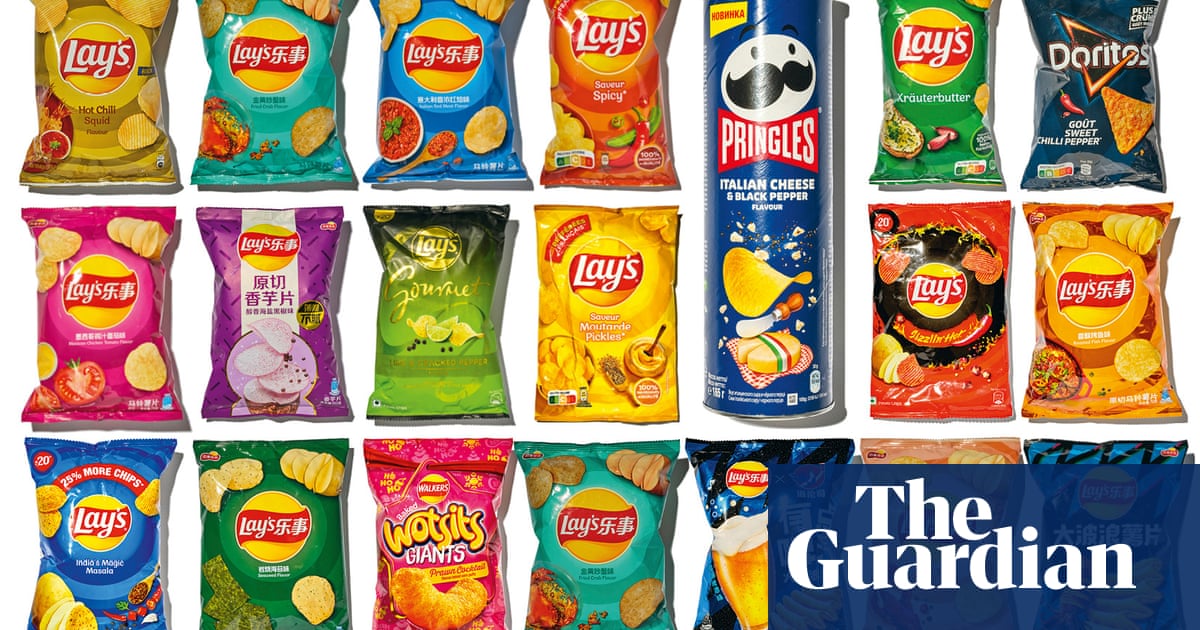核心概念
The author delves into the secretive world of crisp flavor development, revealing the intricate process behind creating unique and culturally specific tastes for global markets.
摘要
The article explores the hidden world of crisp flavor creation, shedding light on the complex process that involves cultural nuances, market trends, and meticulous research. From seasoning houses to global data analysis, the journey from traditional dishes to powdered flavors is a blend of science and artistry that caters to diverse palates worldwide.
客製化摘要
使用 AI 重寫
產生引用格式
翻譯原文
翻譯成其他語言
產生心智圖
從原文內容
前往原文
www.theguardian.com
Inside the surprisingly secretive world of crisp flavours
統計資料
Walkers factory produces 5m packets a day.
Pringles factory in Belgium produces 100,000 tonnes annually.
Lay’s available in more than 200 countries.
Pringles has 34 active flavors in Europe.
Lay’s released beer and rose petal crisps in China.
引述
"It’s quite secretive... Everyone has their own crown jewels that they protect." - Reuben
"They’d just think it was horrendous if you put something like lasagne on a potato chip!" - Peggy
從以下內容提煉的關鍵洞見
by Amelia Tait 於 www.theguardian.com 12-02-2023
https://www.theguardian.com/food/2023/dec/02/the-weird-secretive-world-of-crisp-flavours
深入探究
How does globalization impact the evolution of snack flavors worldwide?
Globalization plays a significant role in shaping the evolution of snack flavors worldwide by facilitating the exchange of culinary influences and preferences across borders. As people travel more, are exposed to diverse cuisines through media and internet, and migrate to different countries, their taste preferences become more eclectic. This increased exposure to various flavors leads to a demand for unique and international tastes in snacks. Snack companies like Pringles and Lay's capitalize on this trend by introducing global-inspired flavors that cater to a broader audience. For example, Lay's launching beer flavor crisps in China or Pringles offering New York Style Cheeseburger flavor in Japan are clear examples of how globalization impacts snack flavor innovation.
How do cultural preferences influence the success of new crisp flavors?
Cultural preferences play a crucial role in determining the success of new crisp flavors as they directly impact consumer acceptance and buying behavior. When developing new crisp flavors, companies need to consider local tastes, traditions, and food habits prevalent in specific regions or countries. For instance, Germans' love for paprika-flavored crisps can be attributed to historical migration patterns from eastern Europe where paprika is commonly used in cooking. Understanding these cultural nuances helps companies tailor their products accordingly – offering variations that resonate with local palates increases the likelihood of success. Moreover, factors like regional spice tolerance levels, dietary restrictions (e.g., vegetarianism), and snacking habits also influence how well a particular crisp flavor will perform in a specific market.
What challenges arise when adapting traditional dishes into snack form?
Adapting traditional dishes into snack form presents several challenges related to maintaining authenticity while ensuring practicality for mass production and consumption as snacks.
Texture Preservation: Traditional dishes often have complex textures that cannot be replicated on crisps or chips easily due to limitations such as crunchiness requirements.
Ingredient Substitution: Ingredients used traditionally may not translate well into powdered seasoning formats suitable for snacks; hence alternative compounds must be utilized.
Flavor Intensity: Ensuring that the essence of the dish is captured accurately within limited space constraints on crisps without compromising taste quality poses a challenge.
Regulatory Compliance: Meeting legal regulations regarding ingredient usage limits (e.g., salt content) adds another layer of complexity when transforming traditional recipes into snack seasonings.
Consumer Expectations: Balancing consumer expectations with innovative adaptations can be tricky – consumers familiar with authentic versions may have high standards which might not align with practical considerations necessary for creating snack-friendly formulations.
These challenges require collaboration between food scientists, chefs, marketers at seasoning houses/companies like PepsiCo or Walkers/Pringles involved in developing new crisp flavors based on traditional dishes while considering both technical feasibility and consumer appeal factors closely
0
